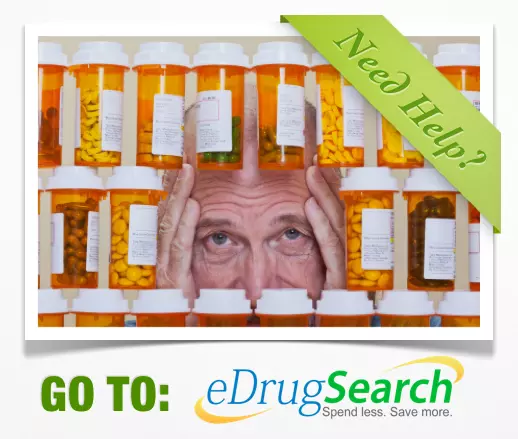According to IMS Health, a leading healthcare information and technology company, Americans spent $325.7 billion on prescription medications in 2012. Compare that to the amount they spent in 1990: about $40.3 billion. For sure, medications now represent a significant percentage of many people’s budgets. For some people who need medication, however, the costs of those drugs are simply too onerous to buy.
Dangerous Ways of Reducing Drug Costs
A recent “Consumer Reports” study detailed a phenomenon that probably seems obvious: When people can’t afford medications, they try to find ways to cut those costs. However, much of the time, those cost-cutting practices are dangerous. For example, they might:
- skip necessary doses of medication
- put off going to the doctor
- postpone medical tests
- share their prescriptions with others, or ask others to share their prescriptions with them
- slice their pills in half, and take half a pill at a time
Abandoning Prescriptions at Pharmacies
Another alarming trend pharmacists have been noticing in recent years is that of customers deciding to forego their prescription medicine. That is, when doctors prescribe certain medications to patients, they often neglect to mention how expensive those drugs are. Then, when patients discover the prices at pharmacies, they realize there’s no way that they can pay for them. Thus, these patients simply walk away.
In fact, doctors often write prescriptions without any sense of whether or not their patients can afford them. And 41 percent of the people who responded to the “Consumer Reports” survey said that their doctors routinely prescribed brand-name drugs over their more affordable generic counterparts.
Who Skips Medications the Most Frequently?
According to a recent study by the U.S. Centers for Disease Control and Prevention (CDCP), most of the people who skip their medications are under the age of 65, as people 65 and older can rely on Medicare to ease the costs of unaffordable prescription drugs. Further, and understandably, the cost of prescription drugs is a particularly pressing problem for people with low incomes and people who do not have health insurance. Indeed, about 25 percent of people between the ages of 18 and 64 have not obtained the medicine they need because they cannot afford it. In addition, about 20 percent of people living at or below the poverty line have likewise avoided filling their prescriptions.
When large numbers of people skip unaffordable prescription drugs, what are the effects on society as a whole? The number of seriously sick people rise, and emergency rooms therefore become much more crowded over time. The rates of otherwise-treatable heart disease, in particular, go up substantially. And many of the people in those emergency rooms are uninsured, which means healthcare costs will probably climb for everyone.
Cutting Prescription Costs Safely
However, if you find yourself worried about the price of your medications, be aware there are safe measures you can take. For example:
- Ask your doctor to prescribe a cheaper drug. Indeed, 20 percent of Americans, across the spectrum of ages and incomes, currently request of their doctors cheaper prescriptions, according to the CDCP study.
- Comparison shop. Researchers at “Consumer Reports,” for instance, found the same quantity of Lipitor being sold for $150 at CVS and $17 at Costco.
One of the most effective ways of comparing drug prices — and one of the easiest — is to go online and search for the drug you need. A great website for doing so is eDrugSearch.com. Not only is eDrugSearch.com a free portal for finding the cheapest prescription drug prices on the market, but it ensures that you’ll obtain medication that is completely safe to take.
About this Angie’s List Expert: Cary Byrd is the president and founder of eDrugSearch.com. Based in San Antonio, eDrugSearch.com is a free cost comparison engine that helps consumers get safe access to affordable medications and advocates licensed Canadian pharmacies as a widely accepted alternative.
It’s no secret that prescription drug prices are at an all-time high. Americans are spending just under $1,000 each year for prescription drugs. Listed below are the top five real reasons why these drugs cost Americans so much.
- You’re paying for all of the drugs in America.
- You’re paying for all of the drugs in the world.
- You’re paying for expensive marketing and advertising campaigns.
- You’re paying for somebody’s fat corporate bonus.
- You’re paying taxes on it too!
1.) You’re paying for all of the drugs in America.
Unfortunately, it’s impossible to just pay for one prescription. The cost of prescription drugs falls on everybody’s shoulders. Drug development is a vast and wide-reaching business. Drug prices cover research and development for a lot of drugs that may not even make it to market. Patients absorb those costs. It takes almost 15 years to bring a drug to market. Americans are paying for these drugs to be developed. Most of these drugs never see the light of day. In fact, only one in about 50 drugs will get to market and an even smaller percentage actually make profits.
2.) You’re paying for all of the drugs in the world.
Unfortunately, Americans subsidize drugs for the rest of the world too. Our high drug costs help to cover prescriptions drugs in third-world developing countries. Price controls are established in other countries. That means that pharmaceutical companies cannot legally raise drug prices. There is no price control in America. American pharmaceutical companies can raise prices legally, so Americans pay extra.
3.) You’re paying for expensive marketing and advertising campaigns.
Pharmaceutical companies are incredibly competitive. Pharmaceutical marketing is a multi-billion dollar business. Pfizer’s marketing budget was over $622 million dollars last year. A research firm, Cegedim, reported that total pharmaceutical industry marketing budgets were close to $28 billion in 2010. Marketing is more than just television and print advertisements too. The budget can also include money for online advertising, physician promotions and direct-mail campaigns. What happens when pharmaceutical companies misrepresent their products in marketing campaigns? Consumers also pick up the tab for expensive lawsuit settlements.
Different Types of Pharmaceutical Marketing Strategies and Campaigns
- Print advertising
- Television advertising
- Online advertising
- Direct-mail campaigns
- Targeting doctors
- Turning patients into consumers
4.) You’re paying for somebody’s fat corporate bonus.
It’s no secret that the big pharmaceutical industry is rolling in money. Prescription drugs are a profitable business. Drug prices go up, and corporate executives get large bonuses. In fact, pharmaceutical companies continue to make record-high profits, even during a recession. Pfizer ranks at the top of the Dow index, with an incredibly high profit margin of almost 27 percent. Pfizer isn’t even the pharmaceutical company with the highest profit margin either.
5.) You’re paying taxes on it too!
It comes as no surprise to most Americans, that they are also paying taxes on these prescription drugs. Drug prices are high for a variety of reasons, and taxes don’t help the situation. Consumers can’t expect taxes to be paid from billion dollar corporate profits or large marketing budgets. Unfortunately, big pharmaceutical companies are passing the buck onto the consumers.
This may be disturbing news for many Americans who are already paying close to $1,000 out of pocket each year due to rising drug prices. The good news is that in 2012, Americans actually spent about one percent less on prescription drugs than in recent years. There is hope for patients who are under-insured or uninsured. Shoppers should consider checking prices at eDrugSearch.com. Since 2006, eDrugSearch.com has been helping the under-insured and the uninsured get safe access to affordable medications. By using eDrugSearch.com’s free drug price comparison tool, you can expect to save between 50 and 80 percent off of U.S. retail prices.
About this Angie’s List Expert: Cary Byrd is the president and founder of eDrugSearch.com. Based in San Antonio, eDrugSearch.com is a free cost comparison engine that helps consumers get safe access to affordable medications and advocates licensed online pharmacies as a widely accepted alternative.
-
-

-
How to Safely Buy Prescription Drugs Online from Cary Byrd on Vimeo.
-
Our Healthcare100 Ranking
-
Search Blog Posts
-
Archives
-
Trending Content
-
Blogroll
- Boerne Church
- Bullet Wisdom
- Christian Social Network
- DrugWonks.com
- Eye on FDA
- GoozNews
- Health 2.0
- In the Pipeline
- Jesus Christ Our King
- Kevin, M.D.
- Pharm Aid
- Pharma Marketing
- PharmaGossip
- Pharmalot
- River Crossing Homes for Sale
- San Antonio Asphalt
- San Antonio Life Insurance
- San Antonio Pressure Washing
- The Angry Pharmacist
- The Health Care Blog
- The Peter Rost Blog
- World Vision
-
Tags
adverse drug reactions big pharma Canadian drugs canadian pharmacies canadian pharmacy consumer reports Dave Ramsey discount drugs divine healing Drug costs drug prices Drug reimportation eDrugSearch.com FDA Fosamax healing scriptures Health 2.0 health blog directory health blogs healthcare100 healthcare reform Hypertension Jehova Rophe Jesus Christ Lipitor Medi Share miracles nabp online pharmacy dictionary osteoporosis Pharmacies pharmacy spam phrma Prescription drugs promote health blog Proverbs 3:5-8 reimportation relenza Roche saving money submit health blog Tamiflu The Great Physician The Lord our Healer Total Money Makover Live -
Recent Comments
- thinking on Crestor, Lipitor, or Zocor – Which statin is right for you?
- carol haslam on Reclast’s “jaw problems” caused by too many warnings, spoken too quickly?
- Seniors on Prescription Drugs: How to Promote Safety | eDrugSearch Blog on How to Report Adverse Drug Reactions
- Seniors on Prescription Drugs: How to Promote Safety | eDrugSearch Blog on How to Check Prescription Drug Interactions
- Ammymickens on CVS drug prices takes on Wal-Mart’s generic drug prices — with a gimmicky twist


